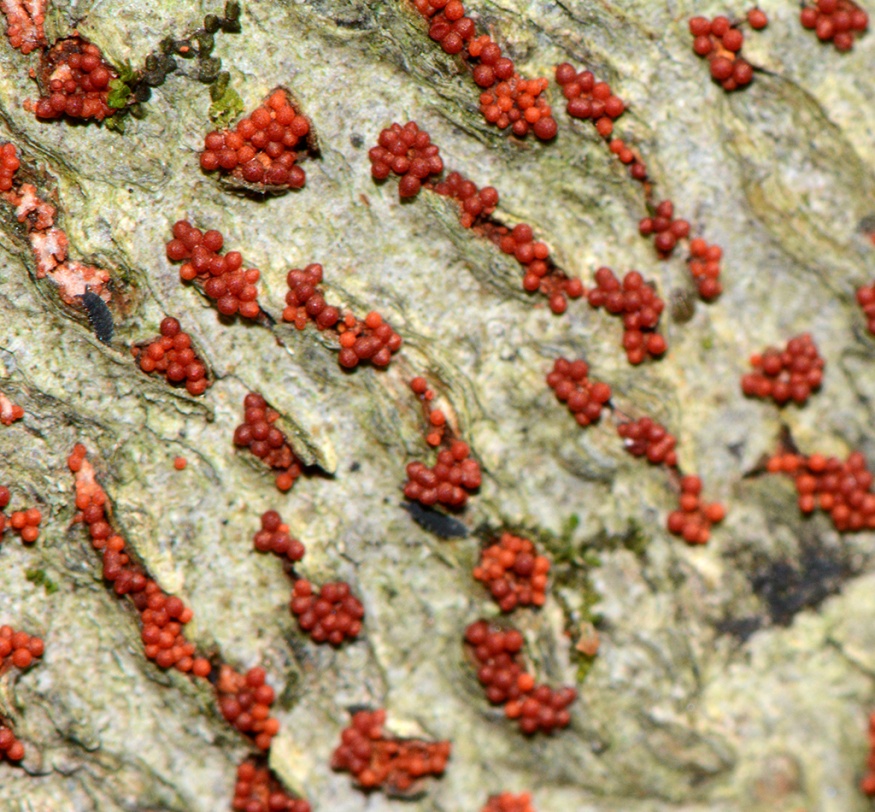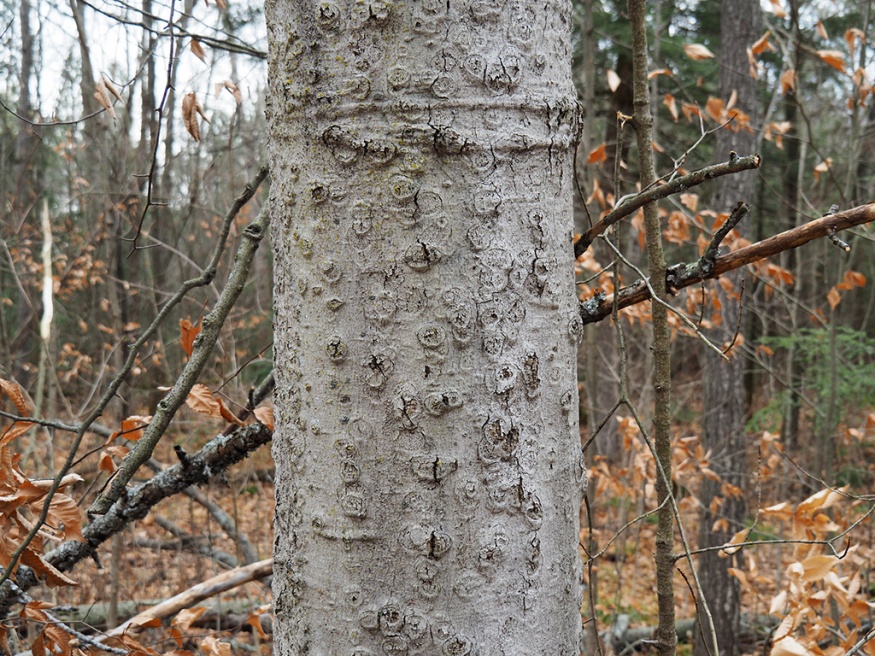Beech Bark Disease

Beech bark disease is an insect-fungus complex impacting hardwood and mixed forests in eastern North America. It's a combination of the small beech scale insect (0.5 to 1mm long) and canker fungus (Nectria canker); targeting American beech (Fagus grandifolia) and European beech (F. sylvatica). The nectria fungus is likely native but beech scale is not. The insect is native to Europe, introduced to Nova Scotia in 1890. It continues to expand across eastern North America and is now in southern Ontario.

How it works
Female scale insects deposit their eggs in bark fissures mid-summer. Scale nymphs hatch, mature, and feed on the sap, colonizing and forming a wooly wax covering overtop of them. They bore openings in the bark for the fungus to enter and infect the tree. This disease invades the bark, cambium and sapwood of the tree causing blisters, calluses, cankers, sometimes oozing sap. There's a 50 to 85% mortality rate within 10 years from initial scale/fungus infestation, resulting in either direct death or weakness and death by other pathogens. Dead mature trees sucker at the roots, disrupting other saplings like maple and birch, altering the ecosystem. These saplings will likely only grow to eventually become infected again.
Symptoms
- Significant dieback or death if mature trees
- Severe cankering and deformation on stems
- Small yellow leaves
- Wilting foliage
References
Invasive Species Centre. (n.d.). Beech Bark Disease. Retrieved from https://forestinvasives.ca/Meet-the-Species/Pathogens/Beech-Bark-Disease
Natural Resources Canada. (2015). Beech bark disease. Retrieved form https://tidcf.nrcan.gc.ca/en/diseases/factsheet/9
OFAH/OMNRF Invading Species Awareness Program. (2012). Beech Bark Disease. Retrieved from: www.invadingspecies.com
Ontario. (2020). Beech bark disease. Retrieved from https://www.ontario.ca/page/beech-bark-disease